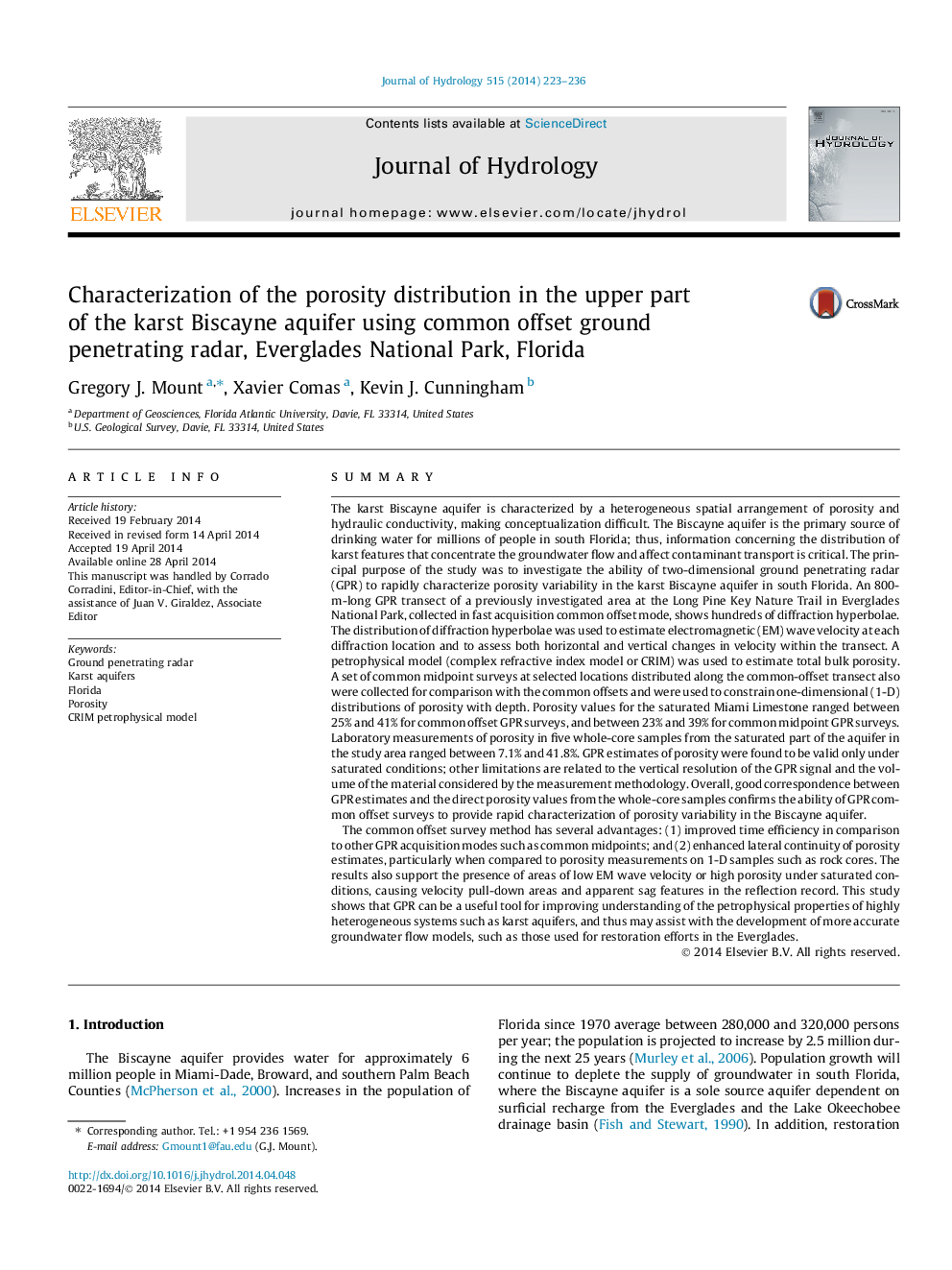| کد مقاله | کد نشریه | سال انتشار | مقاله انگلیسی | نسخه تمام متن |
|---|---|---|---|---|
| 6412857 | 1629933 | 2014 | 14 صفحه PDF | دانلود رایگان |
- We use common offset GPR to rapidly characterize porosity in karst limestone.
- We demonstrate the ability of GPR to characterize subsurface heterogeneities.
- The CRIM petrophysical model is used to build field scale GPR-based porosity models.
SummaryThe karst Biscayne aquifer is characterized by a heterogeneous spatial arrangement of porosity and hydraulic conductivity, making conceptualization difficult. The Biscayne aquifer is the primary source of drinking water for millions of people in south Florida; thus, information concerning the distribution of karst features that concentrate the groundwater flow and affect contaminant transport is critical. The principal purpose of the study was to investigate the ability of two-dimensional ground penetrating radar (GPR) to rapidly characterize porosity variability in the karst Biscayne aquifer in south Florida. An 800-m-long GPR transect of a previously investigated area at the Long Pine Key Nature Trail in Everglades National Park, collected in fast acquisition common offset mode, shows hundreds of diffraction hyperbolae. The distribution of diffraction hyperbolae was used to estimate electromagnetic (EM) wave velocity at each diffraction location and to assess both horizontal and vertical changes in velocity within the transect. A petrophysical model (complex refractive index model or CRIM) was used to estimate total bulk porosity. A set of common midpoint surveys at selected locations distributed along the common-offset transect also were collected for comparison with the common offsets and were used to constrain one-dimensional (1-D) distributions of porosity with depth. Porosity values for the saturated Miami Limestone ranged between 25% and 41% for common offset GPR surveys, and between 23% and 39% for common midpoint GPR surveys. Laboratory measurements of porosity in five whole-core samples from the saturated part of the aquifer in the study area ranged between 7.1% and 41.8%. GPR estimates of porosity were found to be valid only under saturated conditions; other limitations are related to the vertical resolution of the GPR signal and the volume of the material considered by the measurement methodology. Overall, good correspondence between GPR estimates and the direct porosity values from the whole-core samples confirms the ability of GPR common offset surveys to provide rapid characterization of porosity variability in the Biscayne aquifer.The common offset survey method has several advantages: (1) improved time efficiency in comparison to other GPR acquisition modes such as common midpoints; and (2) enhanced lateral continuity of porosity estimates, particularly when compared to porosity measurements on 1-D samples such as rock cores. The results also support the presence of areas of low EM wave velocity or high porosity under saturated conditions, causing velocity pull-down areas and apparent sag features in the reflection record. This study shows that GPR can be a useful tool for improving understanding of the petrophysical properties of highly heterogeneous systems such as karst aquifers, and thus may assist with the development of more accurate groundwater flow models, such as those used for restoration efforts in the Everglades.
Journal: Journal of Hydrology - Volume 515, 16 July 2014, Pages 223-236
